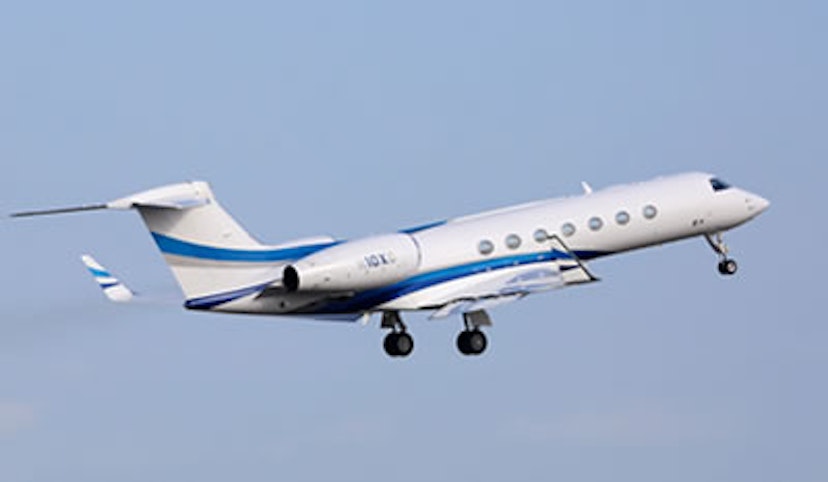Google often boasts about its efforts to fight climate change.
“Climate change is a pressing global issue that poses an imminent threat to our planet,” Google wrote in its 2019 Environmental Report. “Google has a longstanding commitment to climate action and environmental stewardship.”
Despite that promise, however, Google and its top executives have amassed a fleet of aircraft that over the years has spewed hundreds of million pounds of carbon dioxide into the atmosphere, according to a Tech Transparency Project (TTP) investigation.
The flights—which include hundreds of short trips that could have been taken by car, as well as jaunts to likely vacation spots in the Caribbean and South Pacific—undermine Google’s claims to be a responsible steward of the environment. The flight data also shed light on Google’s business and lobbying activities around the world, which TTP will explore in the days ahead.
Google’s collection of aircraft has included 10 Gulfstream jets, two Boeing airliners, and a military-style German fighter jet, the TTP analysis found. And the planes get a lot of use: Since 2005, the 13 passenger planes that have been part of Google’s fleet have logged more than 9,200 flights, totaling more than 13 million miles, according to data from the Federal Aviation Administration (FAA).

Google’s fleet includes a Gulfstream G5, which has made regular flights in and out of San Jose since 2014. Public Domain by 湯小沅
The Google flights consumed roughly 15.75 million gallons of aviation fuel, based on open-source data about the fuel economy of the planes in Google’s fleet. That translates to more than 332 million pounds of carbon dioxide, according to emissions estimates from the Environmental Protection Agency. A passenger traveling in economy class on a commercial airline would need to circumnavigate the globe more than 32,000 times, or once a day for over 88 years, to approximate the same carbon footprint.
It’s unknown what portion of the flights were for business purposes. But in its most recent Environmental Report, Google notes that it has been carbon neutral since 2007, and that it encourages the use of videoconferencing and sustainable commuting options such as public transit and electric vehicles, among other things, to reduce the emissions caused by business-related travel.
Despite those efforts, many of the flights taken by Google’s planes were short trips that could easily have been taken by car. The FAA records show that more than 700 Google flights over this period were between airports located within 100 miles of each other. (The flight calculations are based on the linear distance between airports, though the actual mileage involved in the flights may be longer. Our mileage calculation did not include 129 flights that took off and landed at the same airport.)
Such private air travel is difficult to justify at a time when, the company says, “Climate change is one of the most significant global challenges of our time and Google is committed to doing its part.”

A holding company for Google executives purchased a Boeing 767 in 2005, which was part of Google’s fleet for about a dozen years. CC BY-SA 2.0 by Aero Icarus
The flight records give a glimpse of where Google executives are spending their time, including likely vacation destinations. During the 15 years of flight records we examined, top destinations for Google’s planes included Nantucket, Montana, the British Virgin Islands, and several spots in the South Pacific, including Tahiti, Fiji, and Palau.
In mid-March, as international air travel ground to a halt amid the coronavirus crisis, a Gulfstream owned by Kavitark Ram Shriram, an early Google investor now serving on the board of Google parent company Alphabet, flew from Cape Town, South Africa, back to California, making a stop along the way in Wyoming. Two weeks later, another Gulfstream that appears to belong to Google executives flew from California to Miami and, after several shorter trips, returned from Florida in later April.
The FAA data also help tell a bigger story about the company: Between 2009 and 2011, when Google began to face increasing scrutiny from regulators, Washington, D.C., jumped into Google executives’ top five destinations. Washington has been among the five most visited destinations by planes in the Google fleet in eight of the past 11 years.
Google owns several of the planes outright, while others belong to longtime executives at the company. To figure out what planes are in Google’s fleet, we reviewed online message boards and social media posts, as well as flight records from Moffett Field—a private federal airfield less than 3 miles from the company’s Mountain View, California, headquarters, where Google executives have an exclusive lease.
We also consulted FAA registration records and, because many of the planes are owned by opaque limited liability companies, Federal Communications Commission radio license records that link the planes’ tail numbers to Google, to companies owned by Google executives such as Blue City Holdings, or to registration contacts that are employees of these companies.
In regulatory filings, Alphabet has acknowledged some of the planes. In recent years, it noted that it reimbursed former CEO and executive chairman Eric Schmidt for the use of two aircraft he owns for some business-related travel by Schmidt and other executives. That payment totaled approximately $1.23 million in 2018. The filing noted that the payment was based on an hourly rate of $7,500 for the use of the planes, suggesting, as the Financial Times has noted, that the company reimbursed Schmidt for 164 hours of flight time—a fraction of the total logged by the Google fleet, but still a significant tally. The company’s most recent filing did not indicate any reimbursements to Schmidt during 2019; in early 2020, Schmidt stepped away from a formal role at Google.
The flight data provides only a partial view of Google’s air travel. The FAA data does not include passenger lists or travel by Google executives on commercial aircraft or other privately held planes. But it provides unprecedented insight into the company’s global operations—and its significant carbon footprint.



